Matador Network's Blog, page 1183
January 14, 2019
Countries you can't visit with a DUI

Getting a DUI will make your life harder in multiple ways, but we rarely consider the impact it can have on your ability to travel abroad. Sure, the potential for injury to you and others, astronomical fines, marks on your record, and possible jail time should be big enough to deter you from drinking and driving, but to top it off, some countries may bar you from entering their borders for as many as 10 years. The last thing you want is to book your dream vacation, arrive at the country’s border, and be turned away because of your DUI. If you have a DUI on your record and you’re planning a trip to these seven countries, you may be denied entry or be required to provide special documentation.
1. Mexico
Mexico takes a harsh stance against DUI convicts. Foreigners with drunk driving convictions within the past 10 years are generally refused entry into Mexico. This is because the country’s immigration laws consider a DUI an indictable offense, similar to a felony, and felons are prohibited from entering. Mexican border guards have, however, been known to let travelers pass through with very little scrutiny, so while you could always risk it, don’t be surprised if you’re turned away.
2. United Arab Emirates
Since the Emirates adhere strictly to Muslim scripture, wherein the consumption of alcohol is a sin, their stance on DUI’s is predictably harsh. No specific laws prevent travelers with a DUI from entering any Emirati country, but alcohol-related offenses are frowned upon and may make entry more difficult. Your success really depends upon the strictness of the individual immigration officer.
3. Iran
As a US citizen, entering Iran is already pretty difficult. Trying to enter with a DUI is even more so. Since there are no Iranian embassies within US borders, Iran does not have access to your criminal record. However, you must undergo a “good conduct screening,” during which they will ask you about your history with drugs, alcohol, and related convictions. Admitting to a drinking and driving conviction will likely result in the immigration officer denying you entrance. Similar to the UAE, it ultimately depends upon the individual officer and on what you decide to disclose.
4. China, Japan, and Malaysia
In contrast to Iran and the UAE where total honesty might not be the best policy, it’s in your best interest to disclose your DUI when entering China, Japan, or Malaysia. These countries conduct extensive background checks, and lying about past misdemeanor charges or a criminal background is actually worse than revealing it. For your best chance at entry, contact the US consulate to determine the best course of action. Usually, that means applying for a free travel waiver.
5. Canada
Canada is sneakily one of the most difficult places for US citizens with a DUI to travel. Impaired driving is considered a felony in Canada, and anyone with a DUI is restricted from entering the country for at least five years. Once the five years are complete, and if you have an otherwise clean criminal history, you can pay a $200 fine or apply for criminal rehabilitation to be allowed entrance into Canada. If you’re patient, you could also simply wait 10 years after the conviction to be deemed “rehabilitated by time.” Further details of Canada’s DUI laws can be found here.
6. South Africa
While misdemeanor DUI’s are not a problem in South Africa, a DUI classified as a felony could present serious problems. You will be expected to voluntarily disclose any criminal record at the South African border, even if not asked specifically. Failure to do so is called “deception by silence” and will result in your immediate refusal. If you do disclose your situation and are denied — again, depending upon the judgment of the immigration officer — you can return to the country once the conviction has left your record.
7. Australia
Traveling to Australia is relatively easy for US citizens, but they still must obtain an electronic visa. The visa application includes passing a character test, meaning the applicant must have no substantial criminal record, no convictions, and no association with anyone involved in criminal conduct. For those with a history of criminal misconduct, Australia can permanently prevent you from entering the country. If you do have a DUI, your best bet is to apply for a travel waiver. 

More like this: The 9 most difficult travel visas for Americans to obtain
The post 7 countries you can’t enter if you have a DUI appeared first on Matador Network.

The foods to avoid while flying
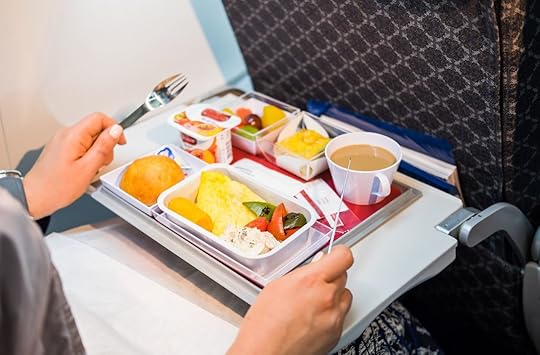
It’s no secret that airline food can vary greatly, from three-course meals prepared by a chef in first class to a pack of peanuts served in economy. What we eat in the air has a big impact on our flight experience. In the best case we’re left full and satiated, but if you choose (or are given) the wrong type of foods, you’ll be even more dehydrated, reduce circulation, and, to the pain of your fellow passengers, have flatulence.
Dante never could have imagined modern air travel, but I’m pretty sure sitting in the middle seat between two travelers passing gas for hours qualifies as one of the deepest circles of hell.
For the wellbeing of yourself and your co-travelers, eat right and follow this guide on what food you should avoid eating before, during, and after your flight.
What to eat before flying
The digestive battle begins long before boarding. Watching what you eat prior to a flight can make all the difference in how comfortable you are during your trip.
Physician and travel blogger Nadine White tells Matador that “gassy foods are either high in soluble fiber or contain certain types of sugars.” Examples include beans, broccoli, cauliflower, peas, plums, oranges, apricots, and dried fruits like raisins and prunes. White also notes that “due to the reduction of the enzyme lactase as we age, adults may find lactose in dairy products will cause bloating and gas. If so, avoid milk, ice cream, cream cheese, and heavy cream before a flight.”
Regarding drinks, White suggests flyers avoid apple juice, which has “an indigestible sugar called sorbitol. Carbonated drinks are also a big culprit of causing gas and stomach bloating, even sparkling water and diet sodas.”
What to eat and drink while flying
You’re thirsty, security made you throw out your water bottle, and the only thing coming around on the drink cart is coffee and tea. To make matters worse, you’re already extremely dehydrated from your flight. Despite studies questioning the level of bacteria in water tanks on a plane, Mia Herman, flight attendant and travel blogger at Travel with Mia, tells Matador it’s safe. “I’ve been drinking [the water] for 10 years and I’ve never gotten sick,” she says. “If you drink coffee or tea on an airplane, you’re drinking water from a tank. If you’re worried, stick to bottled water, juices, or sodas.”
Flight attendant Astrid Quiles Camacho seconds that, stating, “I drink that [tank] water almost every day with my coffee and tea and I’m still alive.”
The food on board is a different story. As a frequent flyer of budget airlines, I’m troubled by the snacks sometimes served on planes, such as pizza pockets or other food heated in its wrapping; studies show that heating plastic in this manner can cause harmful chemicals to leak directly onto the food, particularly with fatty food such as meats and cheeses.

Photo: Brian Goodman/Shutterstock
Those feeling uncertain about the food and beverage items provided on board would be better served by bringing their own. Solid foods can pass through airport security without issue, though you do have to bring limited quantities of creamy spreads like hummus, peanut butter, or jam. Nutritionist Sally Pansing Kravich recommends that you “keep it light. Bring portable foods with you, such as fruit, veggies, and raw nuts.”
Water and other beverages can be purchased at the terminal before boarding, or you can refill a reusable water bottle once you pass security.
Best food to recover from a long flight
Drinking plenty of water can reduce jet lag and help you acclimate quicker to new destinations. It also helps if you indulged in a drink or two. Alcohol hits you harder in the air due to the lack of oxygen and dry atmosphere in flight, and you pay for it with a meaner hangover. As such, staying hydrated is crucial.
Upon landing, Caleb Backe, a health and wellness expert with Maple Holistics, suggests that you “plan where you will be eating ahead of time so that you don’t find yourself starving and winding up at the nearest fast food joint. If you’re able to stay somewhere with a kitchen that’s ideal, but if not, look up farmers markets nearby, as well as clean restaurants in the area to make sure you’ve got healthy options around you.”
Avoid any afternoon caffeine when you land. It’ll be easier to adjust to the local time and schedule without the 4:00 PM espresso when you land. Instead, go for fresh fruit full of fiber and antioxidants. 

More like this: Why you get dehydrated on a flight and how to prevent it
The post Experts weigh in: What to eat before, during, and after a flight appeared first on Matador Network.

Air traffic controllers sent pizza

In a generous show of solidarity with their colleagues south of the border, Canadian air traffic controllers have been purchasing pizzas to be delivered to American air traffic controllers who aren’t getting paid during the government shutdown. It’s estimated that around 300 pizzas have been delivered so far, to over 36 facilities nationwide. The pizzas are coming from air traffic controllers all across Canada, from Vancouver to Toronto, and they’re certainly a bright spot in an otherwise dour shutdown. This is the first week that many government workers, including air traffic controllers, didn’t receive paychecks.
According to Tony Walsh, an air traffic controller at the Minneapolis Air Route Traffic Control Center, 16 extra-large pizzas arrived without warning for the 85 night shift employees on Friday. “Many of us had just gotten our first paychecks saying we wouldn’t be getting paid,” he said. “That little gesture meant so much.”
Peter Duffey, president of the Canadian Air Traffic Control Association, said, “Air traffic control is a very stressful job. They say you have to be 100 percent right, 100 percent of the time. People just don’t need to be reporting to work with the added stress of worrying about how to pay their mortgages and grocery bills on top of it.” The pizzas are being funded largely by individual workers, eager to show their solidarity and support for their American colleagues.
And the gesture hasn’t gone unnoticed; American air traffic controllers have been expressing their gratitude on Twitter. 
Thank you @catca, greatly appreciated #solidarity #NATCA #stoptheshutdown #CATCA pic.twitter.com/FDkbOMXeEZ
— kmchugh329 (@McHugh_Kyle1) January 11, 2019
H/T: Business Insider

More like this: Every way the government shutdown is affecting travel
The post Canadian air traffic controllers are sending pizzas to US colleagues who aren’t getting paid during shutdown appeared first on Matador Network.

January 11, 2019
Why you need to visit French Guiana
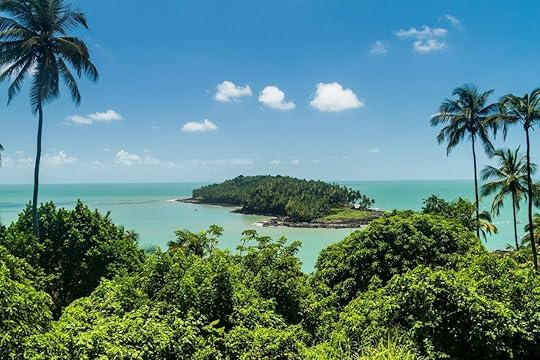
During the 2014 World Cup, French Guiana got the geographical equivalent of 15 minutes of fame. A place a good portion of the world didn’t know existed, much less could find on a map, was highlighted in numerous maps of World Cup stadiums around Brazil, as well as the subject of a number of “interesting places to travel around the World Cup” stories in the months leading up to the event.
And that was the last most of the world thought about it.
It’s not the world’s fault, really. Getting to this French overseas department isn’t exactly straightforward. Your options from the US are either flying to Paris and catching a nonstop to the capital city of Cayenne or taking multiple island-hopping flights through the Caribbean, which almost guarantees your bags don’t make it there with you.
You could also fly into neighboring Brazil or , somehow make your way to a port crossing the bordering rivers, then arrive on the other side in French Guiana. But there’s not exactly an Avis counter on the other side. And with essentially no public transportation, getting around might prove challenging.
But that’s why for the adventurous, this little country that makes up a half-percent of South American landmass might be the best destination in the western hemisphere. It’s rough and rustic, untamed and tropical, but with the safety and stability of the continent’s only outpost of the Eurozone. It’s neither inexpensive nor straightforward, but its challenges have left it for the most part unspoiled.
Here are some of the highlights of what makes French Guiana such a unique place to visit.
The food is as exciting and diverse as the landscape.

Photo: Ramukanji/Shutterstock
As a French overseas department, the food is almost legally required to be good. Yes, the colonial influence is strong, and there’s no shortage of French fine dining both in the capital and the beach cities along the coast.
But French Guiana was also a haven for immigrants from the former French empire, so it’s also teeming with Asian food incorporating South American influence. Vietnamese, Chinese, Laotian and even Hmong cuisine is everywhere, with alluring smells filling the busier parts of Cayenne.
The best place to experience it all is at Place Victor Schoelcher Market, a bustling farmers market that smells of tropical fruits and Indian spices. Here you can grab a fresh juice and stroll the stalls, sampling farm-fresh offerings that are all up to French standards of excellence.
The beaches are totally undisturbed.

Photo: chromoprisme/Shutterstock
Though one might think this warm-weather outpost would have become overrun with wintering French visitors, it has fallen a distant last behind all the French Caribbean islands as a tourism destination. As such, you’ll find one of the best beaches in Cayenne — Remire Montjoly — the odd city beach that looks like a deserted tropical island. The golden sand backs up to thick jungle and palm trees, and though you’ll find a smattering of locals here it still feels highly remote.
Much of the coastline is untamed, and the beaches in towns like Korou feel empty. You can also venture from to the Iles du Salut — or islands of salvation — formal penal colonies that now boast small, isolated beaches.
Perhaps the most famous beach in French Guiana is Plage Les Hattes. The bad news is this is the only beach where you might encounter what passes for “crowds.” The good news is that you’ll only find them at night as the big attraction here is the nesting leatherback sea turtles, which come ashore after dark to bury their eggs. Just be careful not to crush them if you show up during the day.
The wildlife is exotic and abundant.

Photo: STANZI/Shutterstock
Another bonus of minimal development is that animal habitats are relatively undisturbed in French Guiana. That means you can take short excursions into the jungle and encounter the area’s 700 species of birds, 177 species of mammals, and 100 different amphibians.
You’ll see everything from sloths to ocelots, macaws, South American tapirs, monkeys, and even some manatees if you go out onto the water. The jungle isn’t exactly tourist-friendly, though, and if you want to go out wildlife viewing, we highly advise you take an organized tour from one of the cities. Or you can visit the Tresor Nature Reserve in Kaw, about two hours drive from Cayenne.
The prison history is dark but fascinating.

Photo: Josef Stemeseder/Shutterstock
Like a lot of brutally hot and far-flung colonies, French Guiana played a major role as a penal colony for French citizens. The largest remaining relic of the era is the Camp de la Transportation in Saint-Laurent-du-Maroni. This crumbling brick fortress was where prisoners arrived to be distributed among the Iles du Salut and for solitary confinement and execution up until the 1940s. You can tour the cells, which bear ominous art and engravings from former inmates, as well as old shackles and guard’s quarters.
Though the main prison is one of the department’s main tourist attractions, you’ll find the spot both Alfred Dreyfus and Papillon were incarcerated out on the Iles du Salut. Though the most infamous — Ile du Diable — is closed to the public, you can tour the other islands and see the wretched conditions of one of the most notorious penal colonies in the world, as well as dine in the old guards’ quarters and stay overnight in converted prison buildings.
You can see a rocket launch.

Photo: Matyas Rehak/Shutterstock
Anyone with gas money can drive to Florida and see a rocket shot up from Cape Canaveral. See one take off from the Centre Spatial Guyanais, and you’ve got a serious leg up on your space-geek competition. The French developed this unexpected locale for interstellar exploration in 1964 precisely because of its remote location. Today, it serves the European and French space agencies, as well as private rocket maker Arianespace, and offers free guided tours of mission control and the launching grounds. Just note that you must make a reservation, and the tours are all in French.
If you’re lucky, you can plan your visit around a rocket launch, no less impressive from the coast of French Guiana than it is around Disneyworld. And you won’t have to fight half of Florida to get a good view.
It’s the most French-feeling (and sometimes Asian-feeling) place in South America.

Photo: Anton_Ivanov/Shutterstock
In much the same way Buenos Aires feels like a little slice of Italy south of the equator, so does Cayenne feel like someone dumped Paris in the jungle. The streets are filled with sidewalk cafes where people sip coffee and leisurely go about the business of the day. The architecture is the royal colonial style people rave about in places like New Orleans and Martinique.
And though the French influence is charming, take a little side trip to the little town of Cacao for a completely different cultural experience. The Hmong refugee community that came from Laos in the 1970s mostly settled here, building churches and wood stilt homes with a distinctly Asian feel. You can tour a Hmong market, picking up embroidered souvenirs to take home, or stop and sample stuff like red-braised pork and spicy Hmong chicken sausage.
Trips down the river are escapades into centuries past.
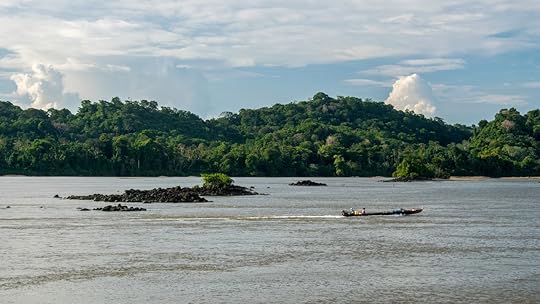
Photo: Quentin Pelletier/Shutterstock
Traversing the jungles of South America is always best done on a river, and in French Guiana, you’ll feel almost like an old explorer, discovering villages of Amerindians and Maroons living a life much like they did centuries ago. The most popular trip is along the Maroni River, which separates French Guiana from Suriname. This 380-mile-long waterway is the longest in the country, dotted with tiny villages that, though used to visitors, haven’t let technology seep in too much.
You can also take a trip along the Sinnamary River into the heart of the Amazon or take on the rapids of the Approuague. Most trips are done via wooden canoes too, lest you feel like you’re on any type of organized “tour.” Though again, any trip into the wilderness here, on land or water, necessitates a guide.

Photo: evenfh/Shutterstock
Nothing remote comes easily, and French Guiana is no exception. It’s the only South American locale to use the euro, and as a result, it’s not only hard to get to but also expensive (though it can be done on a budget). Because locals don’t deal with many tourists, you won’t find many English speakers, and while French helps, you’ll find more people speaking a Creole dialect than anything else. But travel is nothing if not an adventure. And if you’re down for one, you’ll get some serious travel street cred for making your way through French Guiana. 

More like this: How to explore the rugged side of the Canary Islands
The post If you hate crowds, you need to travel to French Guiana this year appeared first on Matador Network.

Most family-friendly European cities
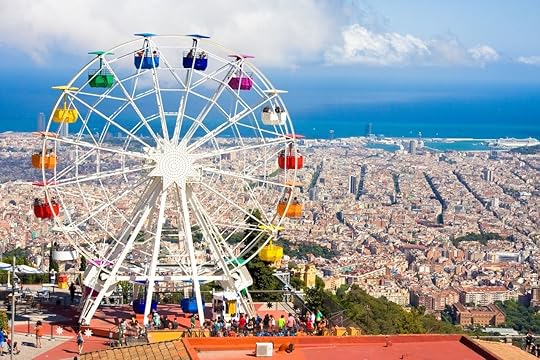
When we think of European travel, we might picture a couple holding hands on Paris’s Pont des Arts or adult friends partying until dawn in Barcelona. But Europe is also a fantastic place to take the kids. Cities from Berlin to Prague are packed with parks, castles, and museums tailormade for little ones. They’re also geared to parents, placing playgrounds next to beer gardens and cafes, so every family member can actually have fun. Here are the most kid-friendly cities in Europe to check out this year.
London, England
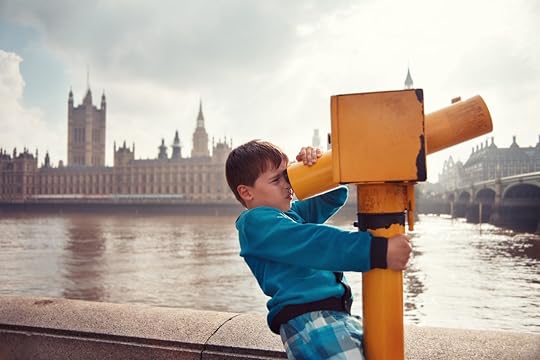
Photo: Levranii/Shutterstock
One of Europe’s biggest cities is also one of its child friendliest, with tons of places to take your children that you’ll enjoy too. The London Transport Museum has enough driveable buses, trams, trolleys, and trains to thrill even the most automobile-obsessed four-year-old. Older kids can read the exhibits while younger kids can get in the train simulator and tour the London Underground. Aboveground, visit the London Eye, a towering Ferris wheel that rises 443 feet in the air. Everyone can enjoy hands-on exhibits at the Science Museum while the Natural History Museum is huge and welcoming and has a large dinosaur collection.
If your kids love history, London overflows with it. Tower Bridge, Buckingham Palace, the Tower of London, and dozens of museums and galleries could provide hours of entertainment — or spooky stories about ghosts. Kensington Gardens’ Diana Memorial Playground has a life-sized pirate ship and teepees scattered across a background of sand and trees, giving kids the space to run and climb while adults enjoy pastries and coffee from the nearby cafe. A 45-minute train ride brings you to WB Studios where Harry Potter was made; enjoy the tour, but skip the butterbeer (too sweet).
Getting around with kids in London is also easy. Double-decker buses are an attraction on their own, and you can get just about anywhere on the Tube. London’s only downside with kids is the price. As one of Europe’s most expensive cities to visit, it’s possible to rack up some hefty fees. Keep your meals at fish and chip shops and curry takeaways, though, and you’ll keep costs low while enjoying a more authentic experience.
Paris, France
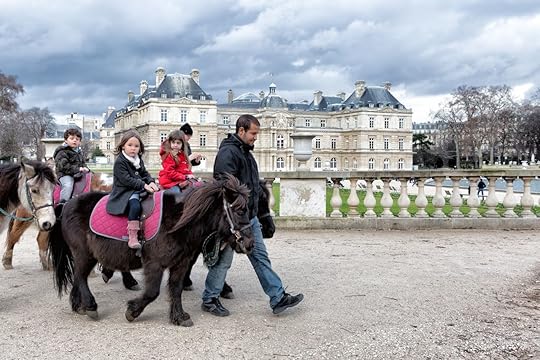
Photo: cdrin/Shutterstock
Supposedly the city of lovers, Paris is also the city of children. Ask any kid sailing wooden boats or riding a pony in the Jardins du Luxembourg whether they’re having a good time, and the answer is a solid yes. When traveling with kids, skip the Louvre — with its long lines and expensive entry fees — and head for the Centre Pompidou; the exterior elevator tubes and modern art are big favorites with tiny people. Older kids will enjoy the Catacombs, an underground labyrinth spanning over 11,000 square meters where over six million bones are stored in a variety of cool and creepy layouts. Plan ahead and buy a “skip the line” ticket online; kids are about $5.75 (five euros). In nice weather, wander through the streets of Montmartre. The whole family can enjoy colorful artist stalls and spectacular city views. Tour Sacre-Coeur or watch the street performers, then have lunch at a petit cafe before heading down the hill. If you stop in Square Jehan-Rictus, adults can take in Le mur des je t’aime (”The I love you wall”), an art piece dedicated to love, while kids check out the small playground several feet away.
At the Notre Dame Cathedral, the stunning and cavernous indoor spaces provide room to wiggle while still being intriguing for adults. Right around the corner, famous ice cream shop Berthillon Glacier serves the flavors candied chestnut and salted butter caramel alongside surefire kid hits like chocolate and vanilla. You could even add a trip to Disneyland Paris. It’s about 45 minutes from central Paris by train and about 25 percent cheaper than a similar trip in the US. Expect the usual theme park fare of rides, overpriced snacks, and interactive game adventures. One difference, seeing as its located near Europe’s gastronomic capital, is that the high-end restaurants on-site get rave reviews; book ahead to ensure a spot, especially in summer.
Barcelona, Spain

Photo: NoyanYalcin/Shutterstock
Barcelona combines the urban atmosphere of a large city with the laid-back ease of a beach town. Barceloneta Beach is huge and calm, and it’s right next to a historic district known for delicious seafood tapas. Kids can swim and play in the sand while adults take advantage of the beachfront bars and restaurants. Everyone will enjoy a visit to the Museum of Chocolate, which offers tasting opportunities and workshops like “Chocolate Artists” where kids get creative with melted chocolate. At Park Güell, kids enjoy the wacky sculptures while running around the large outdoor space, and adults can appreciate Gaudi’s artistry. Check for tickets online before you arrive as it often sells out. Take a funicular uphill to Tibidabo, a perfectly sized amusement park overlooking the whole of Barcelona with the sea beyond.
While some kids don’t enjoy traditional Spanish dishes, most like tortilla española; tell them it’s just like scrambled eggs with potatoes. Or try the albondigas, meatballs, the meal of choice for Spanish kids themselves. Since mealtimes here skew very late, with restaurants not open for dinner until 8:30 PM or later, plan accordingly. One option is to book the latest lunch serving possible, which can sometimes be as late as 4:30 PM. The other is to hit up tapas places like Ciudad Condal and have “dinner” at 6:00 PM. Order the patatas bravas with the spicy sauce on the side; they’re like thick French fries. Public transit is very accessible to children, also. We took two toddlers on the trains all over the city with great success and only lost one boot.
Berlin, Germany

Photo: Romrodphoto/Shutterstock
Berlin is best known as a thriving creative heartland jammed with arts collectives, performance spaces, and unusual installation pieces. But it’s also jammed with tons of things for little ones to do. Walk through the Deutches Technikmuseum’s seemingly endless halls of airplanes, boats, and trains. (Warning: The train exhibit talks about how trains were used in the Holocaust, so sensitive kids might need some preparation.) Tiny history buffs, or even those who just enjoy pushing a bunch of blinking buttons, would enjoy a trip to the DDR Museum, which has a series of interactive exhibits on what life was like before the Berlin Wall fell.
The Checkpoint Charlie Museum focuses on escape attempts. It also offers real passport stamps, but be careful: Having unofficial stamps may invalidate your passport, depending on the issuing country. Older kids and their game-loving adults might appreciate a visit to Computerspielemuseum — an entire (smallish) museum dedicated to computer and video games. Kids of all ages will appreciate MACHmit!, a kids’ museum with interactive play areas, regular art and education exhibits, and creative workshops. Most museums have “family ticket” options where a flat rate buys access for up to five people.
If the weather’s good, head outdoors. Parks usually have playgrounds and beer gardens. A good example is Cáfe am Neuen See where you can also rent a boat to row around the lake. Berlin has several Kinderbauernhöfe, child-focused urban farmyards where kids can pet domesticated animals, take workshops in agriculture, and learn about plants (usually in German but not always). Try Kinderbauernhof auf dem Görlitzer, located in Görlitzer Park.
Many restaurants have child-friendly options and welcome kids without blinking an eye at small running feet. Specialty kindercafes are scattered everywhere in the city, with dedicated play areas next to adult-friendly cafes and restaurants; you can enjoy snacks while kids get their zoomies out. Try Amitola with its children’s theater performances and secondhand store next door, or Café Schönhausen where you can get waffles with a scoop of ice cream. A more adult-oriented option is to hit up Markthalle 9, an indoor market selling produce and specialty meats and cheeses. Packed with food stalls, local merchants, and sometimes even local street performers, everyone can find something they like here… especially if the candy- and pastry-focused Naschmarkt is running.
Stockholm, Sweden

Photo: NadyaEugene/Shutterstock
With some of the best parental benefits in the world, it’s no surprise that Sweden is intensely child-friendly. All restaurants and cafes have changing tables — in both bathrooms! — and free or cheap activities for the under-18s abound, no matter where you go. Sweden’s capital of Stockholm, stretching over several islands, is especially captivating. Kids can enjoy boat rides and bridge-hopping between neighborhoods or duck underground and explore the whimsical subway stations. In between rides at the waterfront amusement park Gröna Lund, kids can experience the Swedish obsession with licorice in all flavors, sold in strings as long as your arm.
At Junibacken Museum, Sweden’s favourite author, Astrid Lindgren, is prominently featured, and kids can get their very own stuffed version of Pippi Longstocking’s famous horse in the bookstore. Next is Skansen, the world’s oldest open-air museum; living history exhibits allow guests to see how Swedes have lived throughout the years, as well as participate in traditional activities while visiting a plethora of wild and domesticated animals in Skansen’s zoo and aquarium.
Public transportation with children in Stockholm is cheap and easy. If you’re traveling with a stroller, one adult may enter the train or bus free of charge. Stockholm’s weather is relatively mild compared to northern Sweden’s sub-Arctic winter temperatures, but prepare for lots of rain if you go in fall or winter. If your kids are still tiny, consider stocking up on Sweden’s infamous one-piece rain suits; you’ll be the envy of every other parent back home. Sweden is also home to a number of child-friendly foods. Kanelbullar (cinnamon buns) and other pastries are a staple of everyone’s diet and are not as sickly sweet as North American versions. Kids might also enjoy the ubiquitous Swedish meatballs with lingonberry sauce, pannkakor (crepe-like pancakes available with jam and cream or savory fillings), or the number one kindergarten snack of crispbread (knäckebröd) with butter and cheese. My kid still asks for this on the daily, and we haven’t lived in Sweden for almost six months.
Prague, Czech Republic
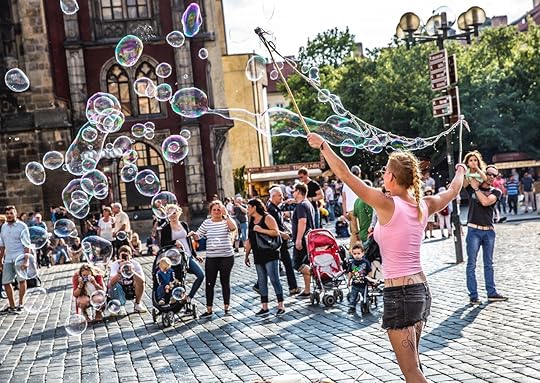
Photo: Subodh Agnihotri/Shutterstock
Prague is not only historically and architecturally stunning, but it also has a ton of activities to enjoy with kids. Compared to other European capitals, it’s also very affordable; hotels, meals, and entry fees are a fraction of the cost than in, say, Oslo. Start off in Letna Park where views of the city and river below are appealing no matter the time of year. Summer visitors can enjoy a drink in the beer garden while kids enjoy the outdoor play area a few steps away. Many river cruises along the Vltava welcome children; you’ll pass by castles, bridges, and architecturally significant buildings without having to wear your feet out walking. Even very young children might enjoy black light theatre, theatrical productions done in almost pitch darkness where performers and props are painted with UV-reactive paint and appear to glow. Several theatres offer shows, and they’re captivating.
Petřín Park, in the center of the city, has no fewer than three playgrounds and a 19th-century mirror maze. AQUAPALACE, an enormous water-based amusement park with seeming kilometers of waterslides, has both indoor and outdoor activities and is open year-round. If you’re visiting in winter, visit a Christmas market; Prague’s Old Town Square market is one of the best in the world. Delicious food and local craftspeople stuff every corner, so sip a mulled wine while your kids explore.
Prague also has 60 museums, including the National Agricultural Museum, which has dozens of interactive exhibits including the opportunity to drive a tractor. The Kingdom of Railways is an interactive model train that lets you tour a scale version of Prague and the surrounding countryside. For lunch, go to Bruxx, a lively Belgian restaurant with a stellar kids’ play area that it shares with the Czech fusion place next door. Adults can enjoy the shellfish while kiddos partake of fish and chips or a heaping helping of waffles.
Billund, Denmark
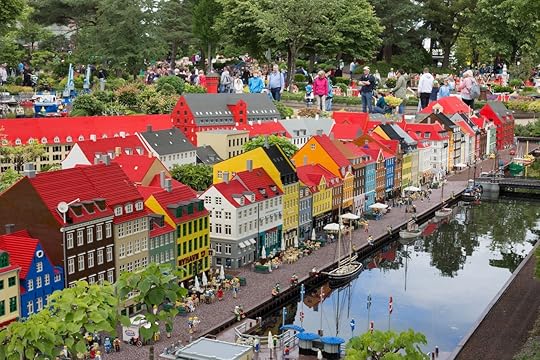
Photo: Anna Soelberg/Shutterstock
There’s only one thing to see in Billund, and it’s Legoland. The original Legoland park opened here in 1968, and it’s been serving a steady stream of visitors ever since. More than 50 million people have walked through the gates. The park lies next to the original LEGO factory and is one of the most popular tourist destinations in Denmark. It’s one of only six Legolands in the world. The town itself is quite small and focused almost entirely on the resort, although there are some restaurants and cafes unrelated to LEGO. I will warn you: My kid was so excited by this experience that she barely slept, so you will definitely want to partake of Denmark’s notoriously strong coffee.
Multiple on-site hotel options are available, from a hotel located right inside the park that has themed rooms decorated with LEGO versions of characters to the more inexpensive Legoland Holiday Village, featuring adorable “barrel rooms,” Ninjago cottages, and Wild West cabins. The holiday village also has a restaurant with buffet breakfast and dinner, a petting zoo with some entertaining goats, and a very well-appointed playground.
2019 sees the opening of the Legoland Castle Hotel where dragon- or princess-obsessed kiddies can enjoy both indoor and outdoor play areas, multiple themed rooms, and take pictures of the park from the parapets. Within the park itself, all rides and attractions are free and range from Duplo World’s more toddler-appropriate options to some mildly terrifying roller coaster and flume rides scattered across seven different themed areas. One of the most popular attractions is Miniland, a sprawling scale model of various local landmarks and locations: Copenhagen’s Nyhavn is easily recognizable as is the London Eye. Explore a replica space shuttle complete with launchpad, or just be fascinated by the semi-functioning scale model of a water-generated power plant. If you just can’t handle another 2×6 brick, go watch Battle of the Brick, a Renaissance-style horseback jousting match. 

More like this: 7 epic family trips that aren’t Disney World
The post The most kid-friendly cities in Europe appeared first on Matador Network.

Norwegian liquor travels the world

People have different definitions of what it means to be well-traveled. For some, it means a big portion of your time is spent exploring new places. To others, it simply means racking up passport stamps. Every drop of Linie Aquavit, a spirit from Norway, is well-traveled regardless of how you define it. In fact, all of the Linie sold since 1821 has seen more of the world than the vast majority of humans.
Before being bottled, Linie is aged in 500-liter barrels that previously held Oloroso sherry for a year. It’s then put on a ship that travels around the world, crossing the equator twice during the journey (hence the name Linie, which refers to the equator line). The barrel-holding ship stops at more than 20 ports of call along the way in more than 10 countries. It’s time-consuming and seems like an extremely inefficient way to barrel age a spirit. But it wouldn’t be Linie without the miles.
“Even if this maturation process sounds inefficient, we still do it today for two main reasons,” Romain Jourdan, a spirits manager at Linie’s parent company, Arcus Norway, tells me over email. “First, it is almost impossible to recreate these changing conditions during the four-month period. The fluctuating temperatures, changing levels of humidity, varying pressure, and the rolling movement of the oceans accelerates the maturation process.”
The barrels of Linie are stored on the upper deck of boats owned by the shipping company Wilhelmsen. Other deliveries are made along the way, and the aquavit is the only thing that is picked up and dropped off in the same port. Each cask is stored in ventilated containers on the deck, exposing them to the climate. This allows the aquavit to “absorb more taste and aromas from the wooden 500-liter Oloroso sherry casks than in a warehouse,” Jourdan says.
Distillers have long known that where a barrel of liquor ages impacts the final taste. Barrels of rum age faster in the hot and humid Caribbean than Scotland’s cool and moderate highlands, for example. Linie gets a little of both and everything in between. The company gave people a taste of what the barrels experience along the journey by putting them on a swaying stool and blasting them with heat, salt spray, and wind. For the aquavit, however, it would be difficult (if not impossible) “to recreate the same maturing conditions and the unique Linie taste,” Jourdan says.
There’s some science to that. In 2018, Popular Mechanics tested the chemical difference between barrels of whiskey that traveled by ship from Kentucky to New York versus whiskey that aged solely in the Bluegrass state. The publication found that the shipped liquor had more characteristics that we associate with longer aging times, like less floral notes and more coconut, vanilla, and wood notes.

Photo: Linie Aquavit
Along with the impact on flavor, the commitment to the sea also comes down to tradition.
It all started in 1805. Lysholm, a Norwegian trade family, shipped a barrel of local aquavit to the East Indies. No one wanted it, so the barrels were shipped right back to Norway. They weren’t going to let all that liquor go to waste. The ship-aged aquavit was tried when it got back to port, and it was a hit.
“Linie has been produced in Norway using the same original recipe since 1821,” Jourdan says. “And since that day, every single drop of Linie has been sent on a four-month sea journey across the world to mature, crossing the equator twice. The maturation at sea is a 200-year-old tradition; Linie Aquavit is one of Norway’s oldest brands and part of the Norwegian Cultural heritage, and Arcus, as the owner of the brand, has the duty to perpetuate this long tradition.”
Linie isn’t the only aquavit with history. The name comes from Aqua Vitae, which is Latin for “water of life.” It’s been made in Scandinavian countries since the 1500s. It can be made from grain alcohol, but in Norway, it’s distilled from local potatoes. Much like genever and gin, aquavit producers spice their spirit with herbs. Only, instead of juniper, the primary flavoring comes from caraway. It’s legally defined in the US as “caraway flavored distilled spirits product.”
It’s a broad definition, allowing for plenty of variation from brand to brand. Each region does it differently, from Norway’s potato-based aquavit to US takes like Skiklubben from New Hampshire and Krogstad from Oregon. Linie, however, is the only one sending its liquor around the world and back.
There’s just one problem with loyally sticking to tradition: all the doubters. In Scandinavia, ”most people have heard about Linie Aquavit and many have also heard about the Linie story of maturation at sea,” Jourdan says. “However, many think it is a marketing gimmick, or that we only send a small part of the production around the world, or that it was done in the past, not anymore.”

Photo: Linie Aquavit
The doubt is understandable. On a trip to Oslo I took in 2015, a bartender walked my girlfriend and me through a series of aquavits, including Linie. When he told us the story about it traveling the world, I was skeptical. Maybe it was a translation issue, or maybe it was because it was the dead of winter in Norway, but the bartender’s explanation was paced more like Eeyore than Tigger, and I felt like I was being taken through one big marketing ploy. It would be a different experience today. To silence the haters, Linie is live streaming the entire four-month journey of some of the brand’s barrels.
From Oslo to Baltimore, through the Panama canal to Tacoma, and then off to Japan and Australia — you can follow it all. An accompanying map shows where the boat is and where it’s been (the equatorial crosses are near Singapore and Panama).
The video is a proof-of-visit equivalent to a modern human traveler’s Instagram posts. Only, every drop of this liquor travels farther than even some of the most well-traveled among us. 

More like this: 9 international spirits worth smuggling back in your suitcase
The post This Norwegian liquor crosses the equator twice before you get to drink it appeared first on Matador Network.

Where to volunteer in NYC

In the words of Chidi Anagonye from The Good Place — though actually posed by philosopher T.M. Scanlon — what do we owe to each other? We’re all here together, so we should probably work together to make things better. Volunteering can help us do exactly that, and it does a wealth of good for everyone, including those being helped, the world around us, and ourselves. New York City has its fair share of problems, but it also has a number of places willing to address them. Finding somewhere to volunteer can be difficult due to the sheer volume of organizations, and resources like New York Cares can help you find something that aligns with your interests, but we’ve listed some of our favorites. Here’s where to volunteer all over NYC this winter.
1. NYC Parks
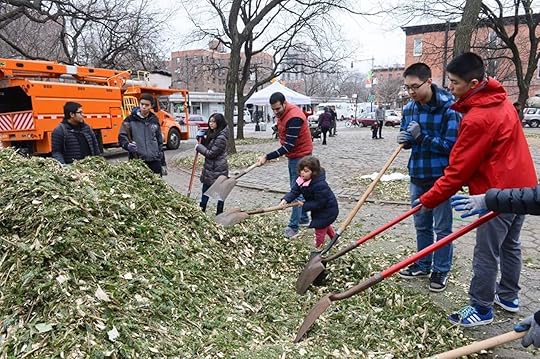
Photo: New York City Department of Parks & Recreation/Facebook
There’s an abundance of green space in New York City, which means there are plenty of places that need a little TLC every now and again — especially if we want to be able to enjoy them at their best. The NYC Department of Parks & Recreation has many volunteer opportunities, ranging from set programs to specific events dedicated to taking care of the space we so often take for granted. You could participate in a Mulchfest event, spreading mulch around young trees to keep them insulated, or learn how to compost at a Turn & Learn Compost Work Day. Or take part in the stewardship program through which you can help clean up, remove invasive plants, and the like. Go make Leslie Knope proud.
2. Coalition for the Homeless

Photo: Coalition for the Homeless, Inc./Facebook
Founded in 1981, the Coalition for the Homeless is the oldest advocacy and direct service organization helping people that are homeless. The Coalition has even gone toe-to-toe with the legal system, such as with the case Callahan v. Carey where the right to shelter for homeless adult men was established (similar cases for the right for women and children came soon thereafter). Various programs to help the homeless are offered, such as meal services, crisis services, housing, and job training. Two volunteer mainstay opportunities are shelter monitoring, where anyone 18 years or older can help in performing inspections of over 350 municipal shelters, and the Grand Central Food Program, where a fleet of vans deliver meals and other necessities to 24 different sites around NYC.
3. Boys and Girls Clubs

Photo: Boys & Girls Clubs of America/Facebook
Our younger years play a significant role in forming the person we become, as do the people we meet during these years, so it’s important that kids have figures in their lives that can help them positively — and volunteering with a youth-centric organization can do just that. The Boys and Girls Clubs of America is one such example. It was established in 1860 by three women who wanted boys who often hung out in the streets to have a positive alternative activity, and it grew nationwide from there. Originally named the Boys Clubs of America, it was amended to its current name in 1990. It focuses on after-school programs for kids of all ages, from six years old to those in young adulthood, with activities in all areas, including education, arts, sports, and wellness. Clubs are located all around NYC, and volunteering at one may find you teaching, helping with homework, or coaching a sports team.
4. Animal organizations and shelters

Photo: Animal Haven/Facebook
The non-human little guys need some help too. NYC is very animal-friendly, and we really love our pets here. Fortunately, there are a ton of organizations committed to helping them, as well as tons of animal shelters that welcome any assistance. Animal Haven is a nonprofit dedicated to finding homes for abandoned cats and dogs and also offers training and rehabilitation programs. While it does require you to volunteer for at least six months, you only have to volunteer for a two-hour shift each week (though you can do more), and you’ll be performing tasks such as walking, feeding, handling, socializing, bathing, and helping out potential adopters.
5. Ali Forney Center

Photo: Ali Forney Center/Facebook
The Ali Forney Center is dedicated to helping homeless LGBTQ youth, providing housing and different supportive services while preparing them to live independently. It was founded in 2002 by Carl Siciliano in memory of Ali Forney, a gender-nonconforming teenager who left his home and, after stays at several foster homes where he was mistreated, ended up on the streets. Forney then became an advocate for homeless LGBTQ youth and was unfortunately murdered at age 22.
As the largest organization devoted to this cause, the list of volunteer opportunities is vast, and some require a minimum commitment. Positions available are meal preparation/youth counselor assistant (three months minimum), where you’ll be giving out one of the three meals the center provides to its clients; drop-in center assistant (three months), where you might help maintaining the donations received, helping youth with clothing needs, assisting with workshops, cleanup, and prep work; leap tutor/mentor (four months), providing career and educational support through workshops, trainings, and one-on-ones; special events and fundraising; and administrative assistance. As long as you meet the minimum commitment, you’re allowed to come however often per week. Locations are spread out over the five boroughs.
6. New York Civil Liberties Union

Photo: New York Civil Liberties Union – NYCLU/Facebook
The New York Civil Liberties Union (NYCLU) is the New York affiliate of the well-known American Civil Liberties Union, a nonprofit that operates in the legal world to defend the rights and liberties of the American people. While it’s not your average volunteer experience, you’ll still learn a lot and help people who may not be able to help themselves. To volunteer, you have to submit a form with your contact information, and you’ll also get to specify what areas interest you, such as racial justice and immigrants’ rights. Where you get placed and what you’ll be doing depends on your specified interests and skillset. 

More like this: 6 ways to make friends if you’re new to NYC
The post Where to volunteer all over NYC this winter appeared first on Matador Network.

These states drink the most wine

People in the US are drinking more wine than ever before — twice as much as in the 1960s, according to the National Institutes of Health. And while Americans are sipping more vino from coast to coast and northern border to southern border, some states are breaking out the bottles more than others.
The NIH compiled data on exactly how much wine each state drinks based on wine sales (which it calls “apparent alcohol consumption for the States”) in 2016, and the results might not be what you’d expect. In terms of pure volume, states with higher population expectedly won out. California, Florida, New York, Texas, and Illinois make up the top five in total amount of wine purchased. The bottom five also followed population numbers: Wyoming, Vermont, Alaska, North Dakota, and South Dakota.
The biggest wine-drinking states per capita, however, are a more telling measurement of the nation’s wine consumption habits. On that list, Idaho leads the country by a wide margin, with a consumption rate of 1.19. The next highest is Delaware, at 0.73, followed by New Hampshire, New Mexico, and Vermont. New Hampshire is known for its low alcohol cost, however, and since the data is based on sales numbers, the consumption assumption might be slightly skewed. Meanwhile, West Virginia, Kansas, Mississippi, Utah, and Oklahoma drink the least wine per capita in the country.
VinePair made two handy maps to visualize the data. If your state didn’t make the list, though, don’t feel left out. Even Idaho, the state with the highest per capita number, feels like the numbers can be misleading. A local Boise publication questioned VinePair and the data’s validity on how much wine is really being drunk, quoting one resident who wants to see a Mythbusters-style test — which is fair, but the best available data only comes from sales.
And as Jay Z says: Women lie, men lie, numbers don’t. 

More like this: The best place to go wine tasting in all 50 states
The post These states drink the most wine appeared first on Matador Network.

Mexican presidential palace opens
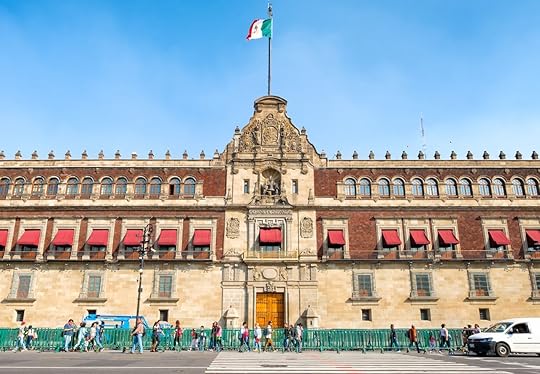
If you’re visiting Mexico City this year, you’ll be able to do something no previous visitor could: tour the presidential palace. Off-limits to visitors during prior administrations, the palace is now a designated cultural center and open to the public. Andres Manuel López Obrador, Mexico’s new president who was sworn in on December 1st, 2018, decided to open the palace as part of his effort to make Mexico’s government more transparent. Keeping his promise to limit government extravagances, Obrador sold the presidential jet, reduced his security detail, took a 60 percent salary cut, and will reside in a Mexico City apartment rather than the presidential palace. The palace will solely be used as an office.
View this post on InstagramA post shared by Periódico LA CRÓNICA (@lacronica) on Dec 2, 2018 at 2:11pm PST
The palace was the official residence of Mexico’s presidents from 1935 to 2018, and visitors are taking advantage of its new accessibility. The complex encompasses several houses where leaders like Miguel Alemán, López Mateos, Miguel de la Madrid, Venustiano Carranza, and Lázaro Cárdenas have lived. At nearly 603,000 square feet, the palace complex is 14 times larger than the White House.
View this post on InstagramA post shared by El Universal (@eluniversalmx) on Dec 1, 2018 at 9:22am PST
The presidential palace can be visited every day from 10:00 AM to 5:00 PM. Entrance is completely free. For information on the palace, including tours, check out this useful guide. 
H/T: Lonely Planet

More like this: 8 places to experience indigenous cultures in Mexico
The post Mexico’s presidential palace is open to the public for the first time appeared first on Matador Network.

The healthiest countries to move to

Being healthier is one of the most popular of New Year’s resolutions. For some, this may include making big life changes — like moving — that make it easier to get and stay healthy. And healthy places aren’t just those with lots of gyms and juice bars. Places to make lifestyle changes are those that share a worldview of health — where physical health is important but so are access to outdoor activities, mental health, low-stress levels, fresh food, quality healthcare, and strong, supportive communities. Because if you’re looking to get healthy (for real, this time), the easiest way to do that is in a place surrounded by people who will support your goals, and may even join you for a morning run. Here are the best destinations to get healthy for good.
1. Switzerland
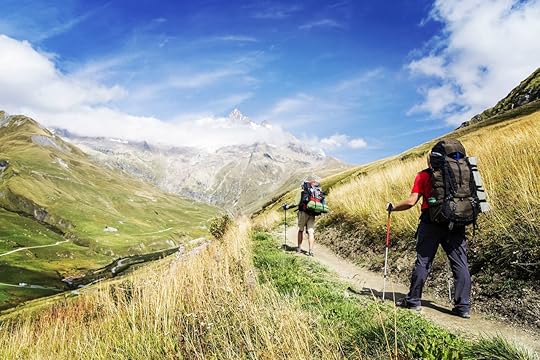
Photo: Vitalii Nesterchuk/Shutterstock
Switzerland continually ranks near the top of world health and happiness indexes and it’s not hard to see why. The country’s natural beauty, the mix of cultures, ease of living, and financial stability combine to create a way of living that is inherently healthful. The Swiss people are laid back and low stress, preferring pleasantry to passive aggressiveness and a healthful meal to fast food. Access to Switzerland’s stunning outdoors is made easy by a famously well-planned public transportation system. This ease of moving about extends outside of the country, with bountiful options for train and plane travel to relax in other popular vacation spots in Europe. While a Swiss passport is one of the hardest in the world to obtain, if you can afford to make yourself a home there, it would probably be worth the effort in the long run.
2. Iceland

Photo: djv-photo/Shutterstock
While Icelanders have to deal with long, chilly, winter nights, they also get to enjoy long, beautiful summers — and enjoy they do. With only a few hours of twilight each summer, Icelanders take advantage of their stunning outdoors by partaking in everything from midnight sun golf tournaments, bike races, solstice parties, and community festivals. The literacy rate in Iceland is 99 percent, there are no McDonald’s, next-to-no violent crime, and no mosquitos. The World Economic Forum has also rated Iceland the best country in the world for gender equality, erasing the stress of income discrepancies and gender-discrimination at work. Social support, generosity, an active lifestyle and freedom in life choices make Iceland an ideal choice for those looking to make a healthy change.
3. Sweden
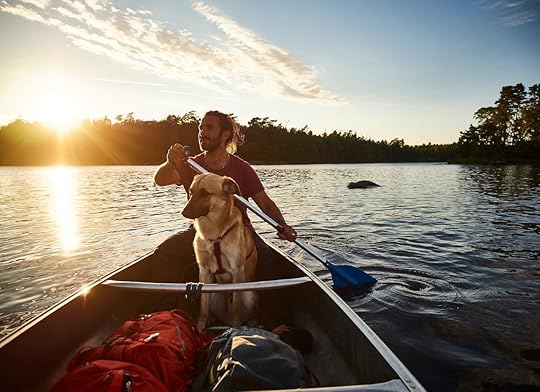
Photo: Patrick Scholz Photo/Shutterstock
Sweden is one of two countries (the other, previously mentioned Switzerland) that ranks at the top of the scale in terms of happiness, health, and productivity. And why wouldn’t it? Ikea is from here. For those who don’t find zen in putting together a bookshelf, Sweden has many other attributes that put it at the top of the healthy-living list. These begin at the government level, with a healthcare system that is mainly government-funded and decentralized, a minimum five weeks of vacation, unlimited sick days, 480 days of paid parental leave, subsidized daycare and no-cost schooling. Extreme weather doesn’t slow Swedes down; they revel in the fresh cold air and daily activities include skiing, ice skating, hockey, walks, and running. In summer, the midnight sun makes time for swimming, kayaking, and the Swedish national “sport” of picnicking. As a whole, people in this country are practical, liberal, tolerant, self-aware, honest, and take care of one another. Not to mention, Swedes are famously good-looking.
4. Japan

Photo: kazoka/Shutterstock
Japan is one of the most technically advanced and smartest nations in the world, with the third-largest economy internationally. While these are good indicators of a healthy place to live, what takes it over the top are two other qualities: heritage and culture. It’s home to more than a dozen UNESCO World Heritage sites, and this balance of technology, history, aesthetics, traditions, and art, along with strong familial connections, makes Japan one of the healthiest places in the world to live overall. Add to a generally healthy diet of seafood, vegetables, and grains, and traditional forms of exercise such as martial arts — along with meditation and mindfulness practice — and a bigger picture emerges of Japan as a health-conscious country, outweighing the smaller stresses of its infamously boisterous cities.
5. Italy

Photo: ildam/Shutterstock
Italy has one of the highest life expectancies in the world at 83.4 years. Most attribute this to the Mediterranean diet but, really, who’s not going to live long when nonna’s always cooking up the good stuff? Food and family are big deals in Italy. Hours are spent preparing meals and still more time spent lingering around the table once it is finished. It is estimated that 70 percent of Italians eat family-style, which means everyone gets to enjoy a bit of everything, versus gouging themselves on a large dish for one. This adherence to a diet of fresh food, low in sugar and heavily processed ingredients, contributes to low obesity rates. In fact, ingredients such as aspartame, MSG, and nitrates are banned from Italian restaurants. Italians also love their coffee perhaps more than anyone else; the difference is that theirs is normally enjoyed as espresso, not the sugar-and-fat bombs that have become prevalent in other countries. In fact, Italy only has one Starbucks, which opened in September of 2018. During a typical 36-hour work week, time is made for long lunches and frequent breaks for espresso and socializing. Productivity actually benefits from these types of breaks and apparently, so does your overall health. Plus, even the bigger cities are highly walkable, not to mention the hiking opportunities in the Dolomites.
6. Australia

Photo: Isabelle FABRE/Shutterstock
Most people in Australia live on, or near, the coast. With the sixth longest coastline in the world, that’s a lot of beach available for walking. Add to that a thirst for adventure, sunny dispositions, access to fresh and healthy food, and universal healthcare, and Australia has all the makings for getting, and staying, healthy for good. The Australian lifestyle focuses heavily on wellness and the outdoors, and the climate means fresh produce is available year round, making it easy to make good food choices. For those looking for targeted wellness, gyms are relatively affordable. One thing many Australians will tell you is they watch little TV because cable is too expensive, public programming is awful, and seriously, why would you choose to sit around inside when you could be outside on the beautiful coast?
7. Spain
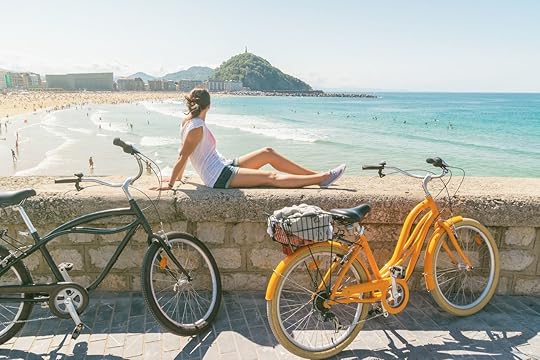
Photo: Fominayaphoto/Shutterstock
Spain also ranks high in life expectancy. Many believe this is thanks to Spaniards’ penchants for community gatherings and their close-knit families, while others attribute it to diet and the fact that walking is a sort of Spanish cultural pastime. Nevertheless, these all combine to create a healthy way of living that contributes to overall happiness, a prime indicator of healthy living. One thing particularly different about Spain is the eating habits of its people. Instead of gorging on large meals, tapas are a way of life in Spain. These small bites are usually enjoyed while on a stroll and in the company of friends, family, or even strangers willing to share a good story. More formal meals center around the ever-popular Mediterranean diet, high in good fats, fruits, vegetables, dried fruits, and nuts. Spain is also famous for its sunshine, outdoor activities, healthy wine drinking habits, and laid back approach to life — stress can always wait ‘til mañana.
8. Western United States

Photo: oneinchpunch/Shutterstock
While the US as a whole usually shows up near the bottom of “healthiest country” rankings, thanks to soaring levels of obesity, there is one American region that consistently ranks high in healthy living: the West Coast. Californian cities of Irvine, San Diego, and San Francisco, along with Portland, Oregon, and Seattle, Washington, each rank in the top 10 of healthiest places in the US to live. Obviously, one commonality all of these locations share is relatively easy access to the outdoors — from the swells of the Pacific Ocean to the snow-capped peaks of the Cascade Mountains — and the shared culture of enjoying it. Thirteen of the United States’ 58 national parks are located in Washington, Oregon, and California. Other shared characteristics of health include support of artistic and self-expression, open exploration of spirituality, eco-friendliness, forward-thinking liberal politics, and healthy economies. Another plus is the concentration of progressive therapy, alternative thought, medical treatment, and alternative medicine centers to keep bodies and minds healthy. 

More like this: The 7 healthiest cuisines in the world you should learn to cook
The post The best countries to move to get healthy for good appeared first on Matador Network.

Matador Network's Blog
- Matador Network's profile
- 6 followers



